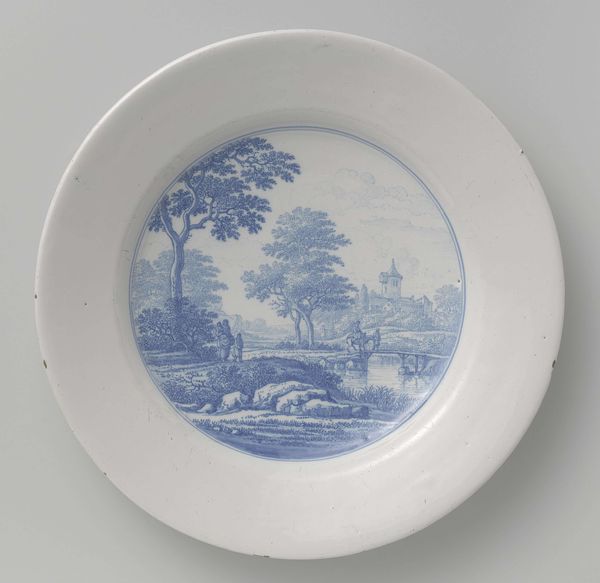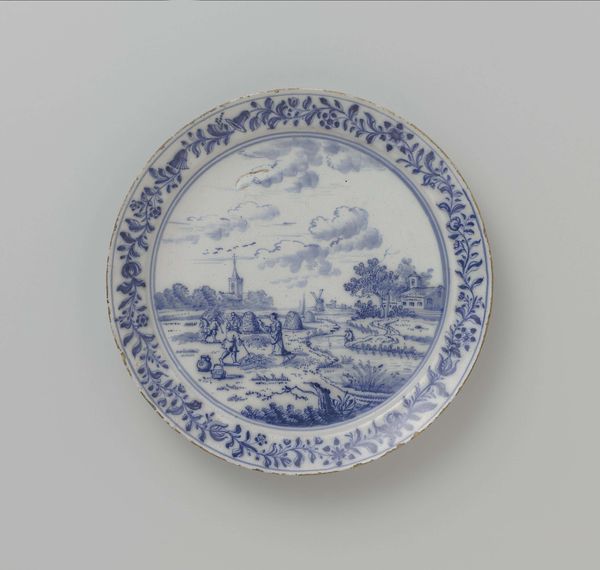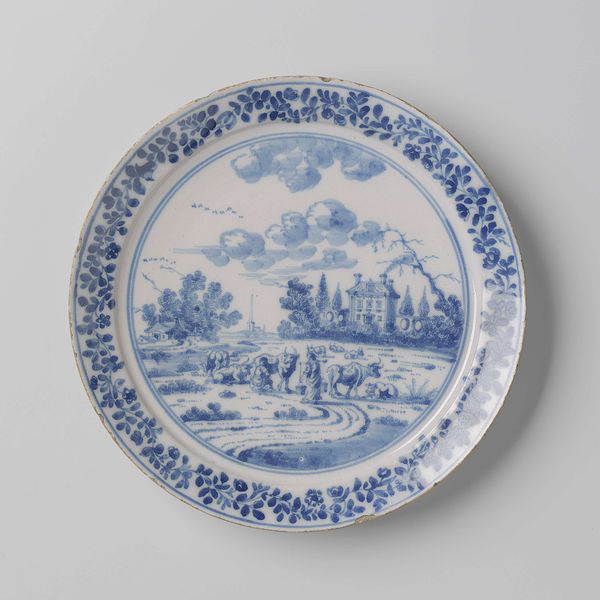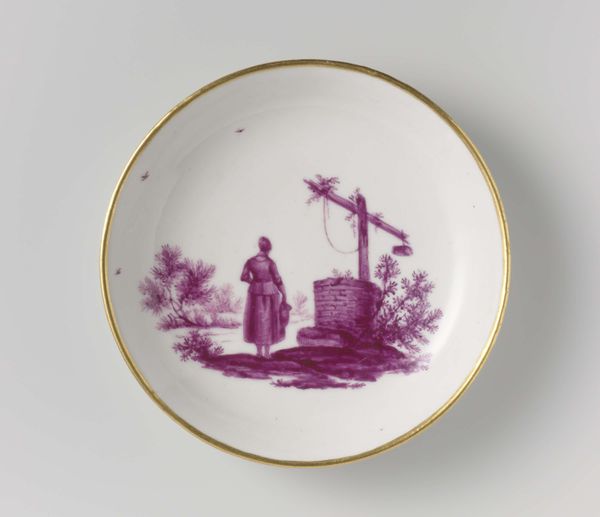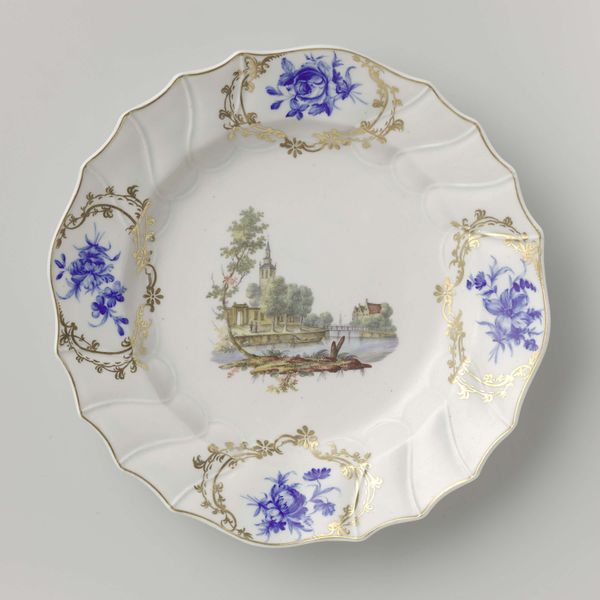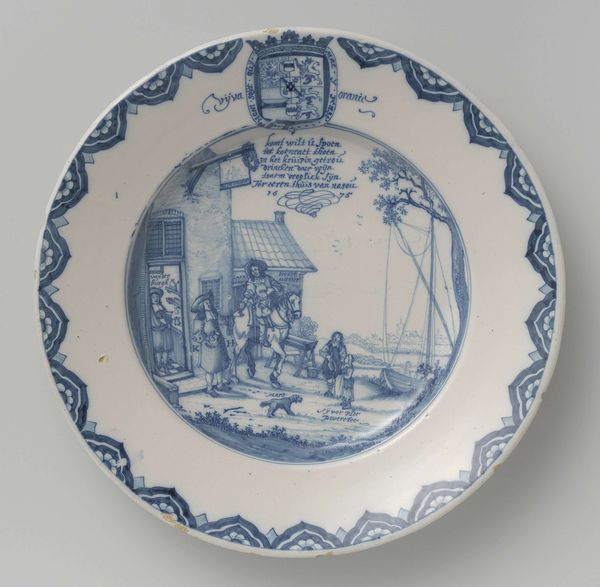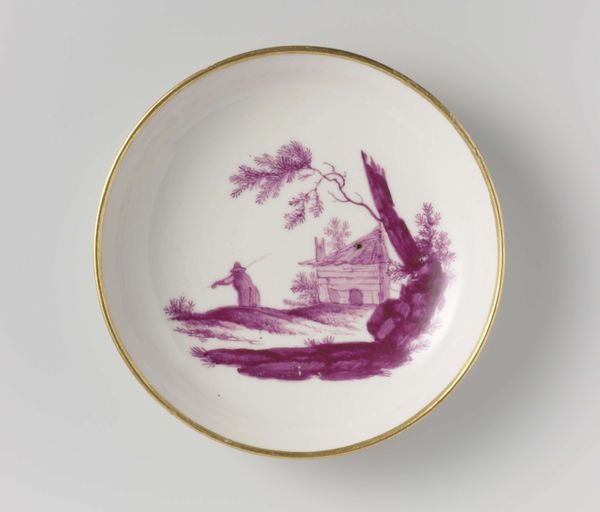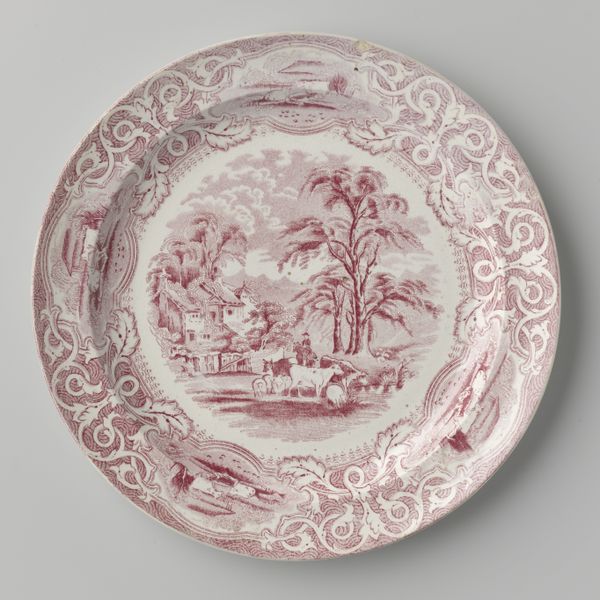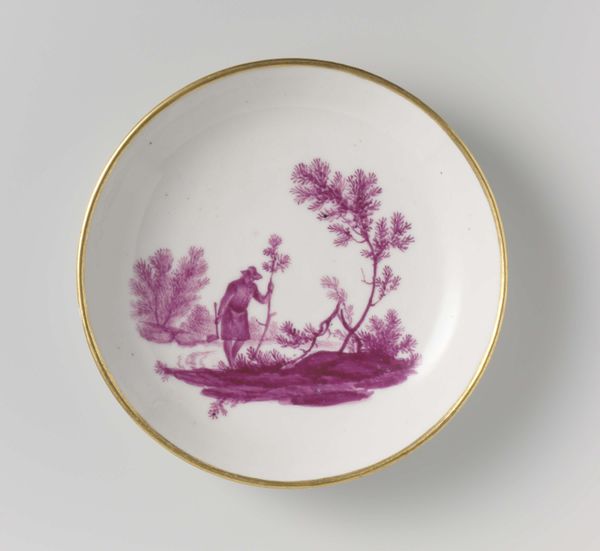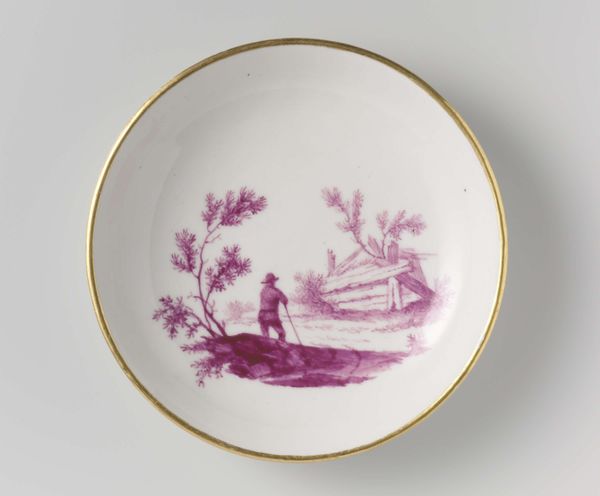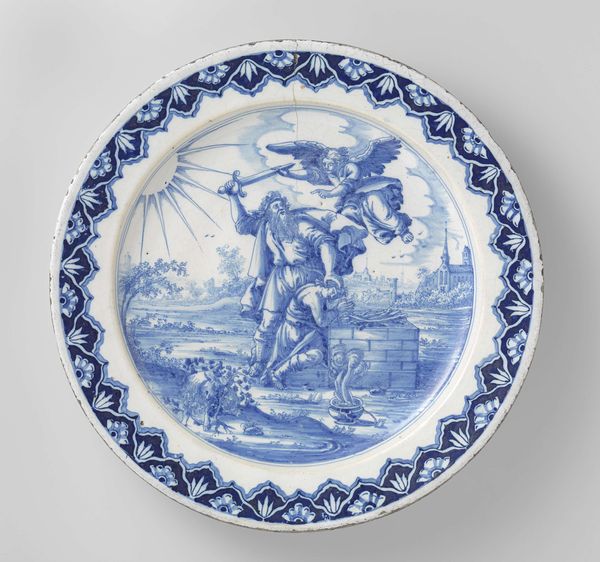
painting, ceramic
#
dutch-golden-age
#
painting
#
landscape
#
ceramic
#
ceramic
Copyright: Rijks Museum: Open Domain
Editor: This charming ceramic plate, “Bord van faïence met landschap” by Frederik van Frytom, likely dating from 1670 to 1700, showcases a delightful Dutch landscape in delicate blue and white. I'm struck by its folksy charm. What can you tell me about the societal context of art produced on functional items like plates? Curator: Well, domestic items such as these reveal much about the everyday lives and aspirations of people during the Dutch Golden Age. Delftware, as this type of faïence is often called, became incredibly popular. Instead of being restricted to the elite, did such images have the potential to disseminate values, beliefs, or even a sense of national identity? Editor: That’s a thought. I hadn’t considered its potential impact on cultural identity. The church is prominently placed, and two people are leisurely walking by a pond; do these types of serene imagery point to the values celebrated in Dutch society at that time? Curator: Precisely! These landscapes idealized the Dutch countryside, offering a vision of tranquility and prosperity – values that were increasingly associated with Dutch identity during this period of growing global power and commerce. What is interesting is whether or not that tranquility obscures, or distracts from, very real socioeconomic imbalances present. The people who could afford such luxuries, likely had vested interests in preserving such images of stability. Editor: It’s amazing how much history is embedded even in something as simple as a plate! I see the idealized vision of the Dutch Golden Age represented, but it's intriguing to think about the piece possibly promoting the status quo. Curator: Exactly! Art provides a window into the past, revealing not only what people saw but also how they wanted to be seen. Everyday life is definitely fertile ground for thinking about this further!
Comments
No comments
Be the first to comment and join the conversation on the ultimate creative platform.
